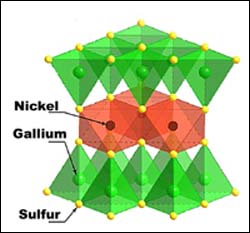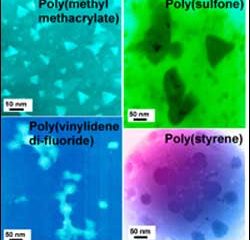Materials Sciences
Materials management deals with the research, development, manufacturing and processing of raw and industrial materials. Key aspects here are biological and medical issues, which play an increasingly important role in this field.
innovations-report offers in-depth articles related to the development and application of materials and the structure and properties of new materials.

The ESRF tests the hardest and least compressive material in the world
Nanorods of many materials are proving very successful, and their properties often exceed that of nanotubes, making them excellent candidates for industrial applications. Theoretical calculations predicted that diamond nanorods too would have properties superior to that of carbon nanotubes. But, so far, nobody had been able to actually synthesize diamond nanorods. This is no longer true. A team from the Bayerisches Geoinstitut (Universität Bayreuth) has just reported the synthesis of these aggregat

Argonne theorist gains new insight into the nature of nanodiamond
The newest promising material for advanced technology applications is diamond nanotubes, and research at the U.S. Department of Energy’s Argonne National Laboratory is giving new insight into the nature of nanodiamond.
Argonne researcher Amanda Barnard, theorist in the Center for Nanoscale Materials, is working with colleagues at two Italian universities who produced innovative diamond-coated nanotubes.
The diamond-coated tubes resemble a stick of rock candy, hol

Nanohelix structure provides new building block for nanoscale piezoelectric devices
Based on superlattice nanobelts
A previously-unknown zinc oxide nanostructure that resembles the helical configuration of DNA could provide engineers with a new building block for creating nanometer-scale sensors, transducers, resonators and other devices that rely on electromechanical coupling.
Based on a superlattice composed of alternating single-crystal “stripes” just a few nanometers wide, the “nanohelix” structure is part of a family of nanobelts – tiny ribbon-l

Novel material may demonstrate long-sought ’liquid’ magnetic state
A novel material that may demonstrate a highly unusual “liquid” magnetic state at extremely low temperatures has been discovered by a team of Japanese and U.S. researchers, according to tomorrow’s issue of Science.*
The material, nickel gallium sulfide (NiGa2S4), was synthesized by scientists at Kyoto University. Its properties were studied by both the Japanese team and by researchers from The Johns Hopkins University (JHU) and the University of Maryland (UM) at the Commerce

Researchers creating moldable materials for fuel cell bipolar plates
Composite material, compression process to reduce time, cost of manufacturing bipolar plates
A single fuel cell does not produce enough energy to power a car. So fuel cells are stacked, with a bipolar plate between each cell through which electrons are conducted. The hydrogen fuel and oxygen, which are part of the fuel cell chemistry, enter the plate through channels along the face on each side of the plates. Creating the channels in the bipolar plate is a manufacturing challenge.

Researchers find new mechanism governing particle growth in nanocomposites
Controlling nanoparticle size
Because the properties of nanoparticles depend so closely on their size, size distribution and morphology, techniques for controlling the growth of these tiny structures is of great interest to materials researchers today.
A research team from the Georgia Institute of Technology and Drexel University has discovered a surprising new mechanism by which polymer materials used in nanocomposites control the growth of particles. Reported on Au